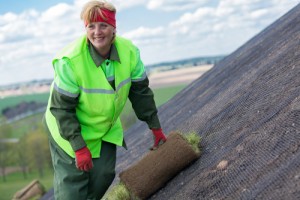Erosion control is important in a variety of settings and situations, but it’s arguably most important when dealing with a significant slope. There are disastrous outcomes awaiting when erosion control isn’t properly implemented in these scenarios. Thankfully, there are multiple ways of controlling slope erosion. Here are three of the most common.
- Erosion control mats
There are many different types of erosion control mats, from non-degradable to bio-degradable materials. Usually, these mats, or blankets, are made from coconut, wood or straw fibers that are knit together. They can then be placed over a slope to provide erosion control for up to a year. This helps keep the existing soil in place. When work is finished, you can even plant seeds on the slope and the erosion control mats will help keep them in place
- Growing plants
Besides the aesthetic value of having plants and other vegetation growing in an area, there is also value for erosion control. By mixing groundcover with trees, and shrubs, erosion on a slope is limited by the deep root systems that act as a water barrier. When rainwater runoff comes down the slope, the plants will limit the erosion it causes. For the best results, try to plant vegetation with a variety of root depths. Then, between plants on the surface, use mulch to cover soil, or stones.
- Retaining walls
Hardscape options like retaining walls are another good option for limiting slope erosion. Retaining walls can be constructed from virtually any material you choose. From concrete, brick or stone, to railroad ties or logs. If you keep the walls small enough, you don’t even need a permit to build them.
At Maxwell Supply in Tulsa, we offer all the products you need to fight erosion control. Whether you’re on a construction site or on your own property, come see us for help.
